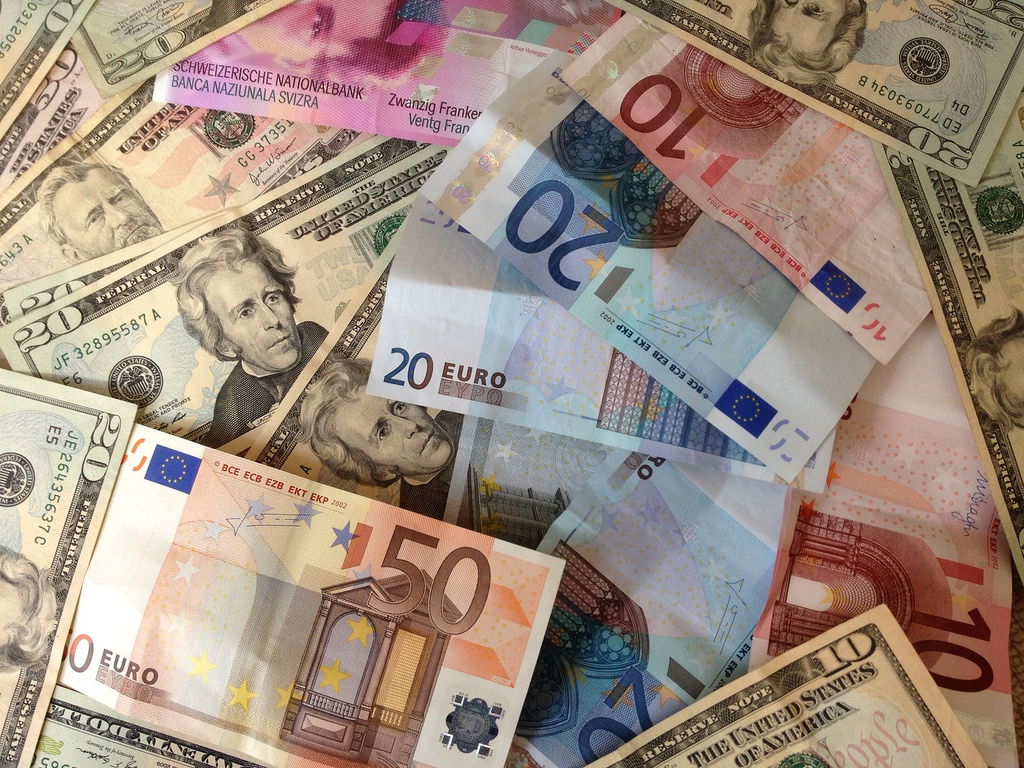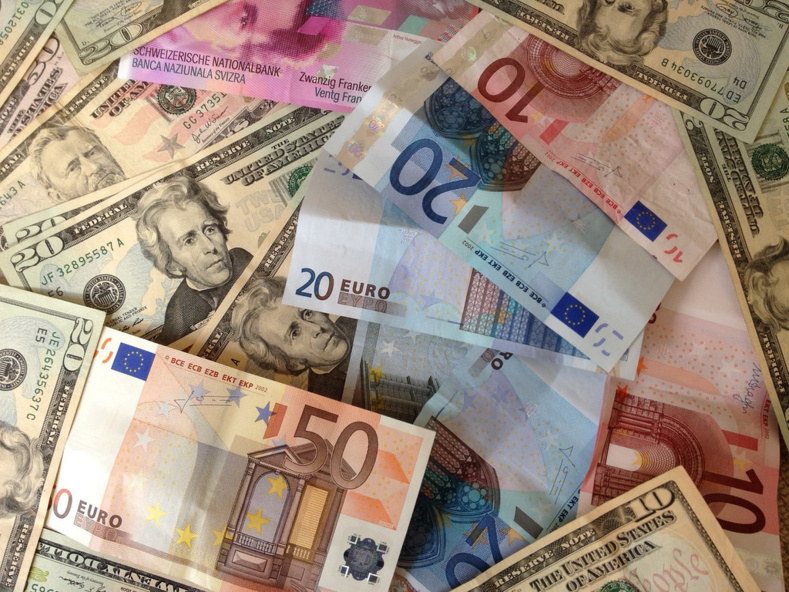Paper money innovators
Modern global banknote production industry is a group of organizations that, on the one hand, interact with each other when executing complex orders and within international associations and conferences, and on the other hand compete irreconcilably in the market for the production of banknotes, components and security features.
With some apparent conservatism, the development of the banknote production industry demonstrates high dynamism and innovation from a technological point of view. Throughout history, the industry was one of the first to begin to apply technological innovations. The process of finding and implementing innovations has only become more intense over the years. But do we really need hi-tech banknotes, stuffed with the latest tech gimmicks? And why can’t we get by with old-but-gold features like watermarks and security threads?
From hand-made to hi-tech
One of the earliest mentions of counterfeiters appeared in ancient China. Writings on the first Chinese bills warned from copying them, which means that counterfeiting is as old as money itself. Later, in the 19th century, the situation wasn’t any better. The first paper money in Europe was forged so often that the volume of fakes exceeded the volume of real bills.
Banknote issuers had no choice but to protect themselves and their products, and so they started introducing security features one by one. There were first watermarks and wavy patterns on French bills, engraving and vignettes on their American counterparts, and even hand-made multilayered banknotes of Tibet.
Eventually, different techniques morphed into modern high-tech production, which allows effectively resisting counterfeiters. Thus, 331 thousand counterfeit euro banknotes were withdrawn from circulation in the first half of 2017, while total number of euro bills in circulation then reached 20 billion.
Thomas Savare, CEO of French security printer Oberthur Fiduciaire, explains this success from the point of view of a banknote manufacturer: “[Modern] banknote paper is a very specific one, only used for banknotes, and manufactured by extremely niche suppliers who will only sell to recognized banknote printers (state printers or private printers). The same goes for the ink, which is resistant and has integrated security features. The entire supply chain is dedicated to this industry and that’s a large part of the security of a banknote.”
Small mistakes, big consequences
In addition to security, there are also subtler nuances that remain virtually unchanged over time. One of them is choice of a banknote printer. Be it a domestic state-owned production or a private company located abroad, the slightest mistake, violation of secrecy or unfortunate turn of events can often lead to disastrous consequences, and history clearly shows it.
In 1811, the US Congress rejected a proposal to extend the license to the First Bank of the United States. One of the reasons was that the right to issue money was received not only by the First Bank, but also by commercial banks. They flooded the country with all kinds of banknotes with varying degrees of security, which the counterfeiters faked with pleasure, and the bankers themselves issued banknotes for amounts not covered by their reserves. As a result, the country's economy nearly collapsed.
Currently, all efforts of those involved in the production and distribution of banknotes are aimed at avoiding similar (and other) incidents. Central banks have very strict requirements when it comes to choosing a banknote printer. Those, who have been awarded with this privilege, have to adhere to rigid rules. The key requirements are full compliance with production standards (such as ECB certification), traceability, transparency (i.e. compliance with Internal Control and Audit programs of the banks and ISO norms), and also complete control over the production chain in order to ensure security as well as prevention against corruption.
Less competition, more innovation
In many ways, the modern banknote industry behaves like any other global sphere of industrial production. At the same time, the main stimulus for the development of banknote production was not the competition, which would inevitably lead to an increase in production speed and volume, but the need to develop technologies that prevent appearance of counterfeit banknotes. Reputation and security guarantees are also important. Oberthur’s CEO explains the main criteria: “There are few companies that are qualified to print banknotes and have the right security to be able to offer that to central banks. The criteria to choose a supplier is obviously based on the technical ability, the experience and security.” Without these components, it is impossible to create a truly fine and reliable product.
Ref.
https://www.theibns.org/joomla/index.php?option=com_content&view=article&id=251&Itemid=127&limitstart=4
https://www.ecb.europa.eu/press/pr/date/2017/html/ecb.pr170721.en.html
https://www.thestrategist.media/oberthur-fiduciaire-banknote-printing-fiduciary/
Modern global banknote production industry is a group of organizations that, on the one hand, interact with each other when executing complex orders and within international associations and conferences, and on the other hand compete irreconcilably in the market for the production of banknotes, components and security features.
With some apparent conservatism, the development of the banknote production industry demonstrates high dynamism and innovation from a technological point of view. Throughout history, the industry was one of the first to begin to apply technological innovations. The process of finding and implementing innovations has only become more intense over the years. But do we really need hi-tech banknotes, stuffed with the latest tech gimmicks? And why can’t we get by with old-but-gold features like watermarks and security threads?
From hand-made to hi-tech
One of the earliest mentions of counterfeiters appeared in ancient China. Writings on the first Chinese bills warned from copying them, which means that counterfeiting is as old as money itself. Later, in the 19th century, the situation wasn’t any better. The first paper money in Europe was forged so often that the volume of fakes exceeded the volume of real bills.
Banknote issuers had no choice but to protect themselves and their products, and so they started introducing security features one by one. There were first watermarks and wavy patterns on French bills, engraving and vignettes on their American counterparts, and even hand-made multilayered banknotes of Tibet.
Eventually, different techniques morphed into modern high-tech production, which allows effectively resisting counterfeiters. Thus, 331 thousand counterfeit euro banknotes were withdrawn from circulation in the first half of 2017, while total number of euro bills in circulation then reached 20 billion.
Thomas Savare, CEO of French security printer Oberthur Fiduciaire, explains this success from the point of view of a banknote manufacturer: “[Modern] banknote paper is a very specific one, only used for banknotes, and manufactured by extremely niche suppliers who will only sell to recognized banknote printers (state printers or private printers). The same goes for the ink, which is resistant and has integrated security features. The entire supply chain is dedicated to this industry and that’s a large part of the security of a banknote.”
Small mistakes, big consequences
In addition to security, there are also subtler nuances that remain virtually unchanged over time. One of them is choice of a banknote printer. Be it a domestic state-owned production or a private company located abroad, the slightest mistake, violation of secrecy or unfortunate turn of events can often lead to disastrous consequences, and history clearly shows it.
In 1811, the US Congress rejected a proposal to extend the license to the First Bank of the United States. One of the reasons was that the right to issue money was received not only by the First Bank, but also by commercial banks. They flooded the country with all kinds of banknotes with varying degrees of security, which the counterfeiters faked with pleasure, and the bankers themselves issued banknotes for amounts not covered by their reserves. As a result, the country's economy nearly collapsed.
Currently, all efforts of those involved in the production and distribution of banknotes are aimed at avoiding similar (and other) incidents. Central banks have very strict requirements when it comes to choosing a banknote printer. Those, who have been awarded with this privilege, have to adhere to rigid rules. The key requirements are full compliance with production standards (such as ECB certification), traceability, transparency (i.e. compliance with Internal Control and Audit programs of the banks and ISO norms), and also complete control over the production chain in order to ensure security as well as prevention against corruption.
Less competition, more innovation
In many ways, the modern banknote industry behaves like any other global sphere of industrial production. At the same time, the main stimulus for the development of banknote production was not the competition, which would inevitably lead to an increase in production speed and volume, but the need to develop technologies that prevent appearance of counterfeit banknotes. Reputation and security guarantees are also important. Oberthur’s CEO explains the main criteria: “There are few companies that are qualified to print banknotes and have the right security to be able to offer that to central banks. The criteria to choose a supplier is obviously based on the technical ability, the experience and security.” Without these components, it is impossible to create a truly fine and reliable product.
Ref.
https://www.theibns.org/joomla/index.php?option=com_content&view=article&id=251&Itemid=127&limitstart=4
https://www.ecb.europa.eu/press/pr/date/2017/html/ecb.pr170721.en.html
https://www.thestrategist.media/oberthur-fiduciaire-banknote-printing-fiduciary/















